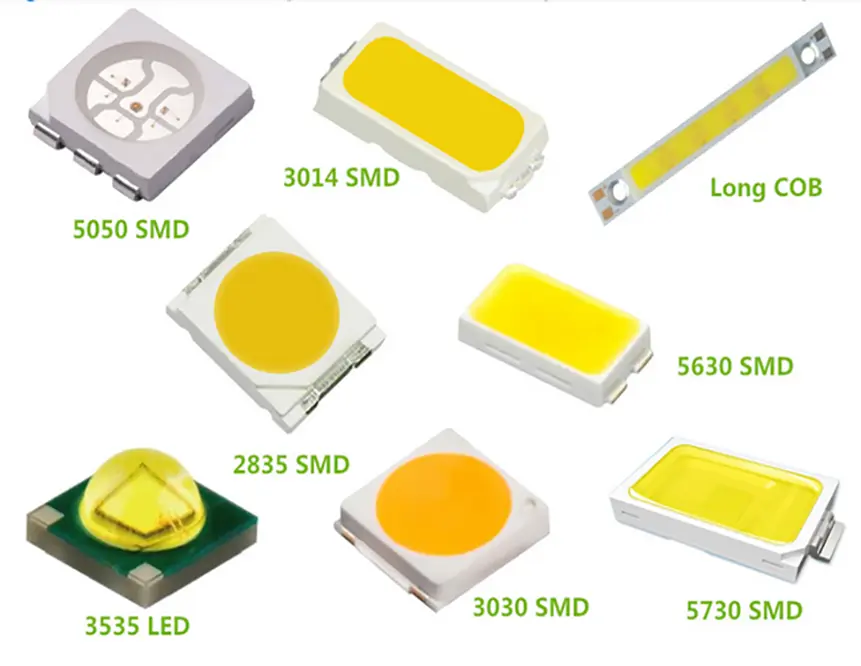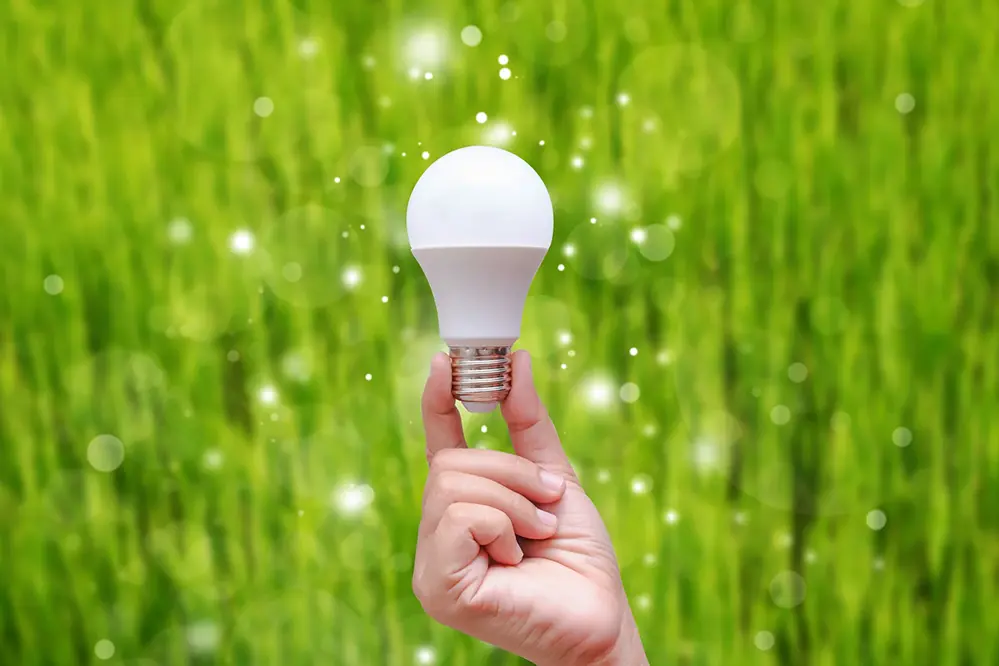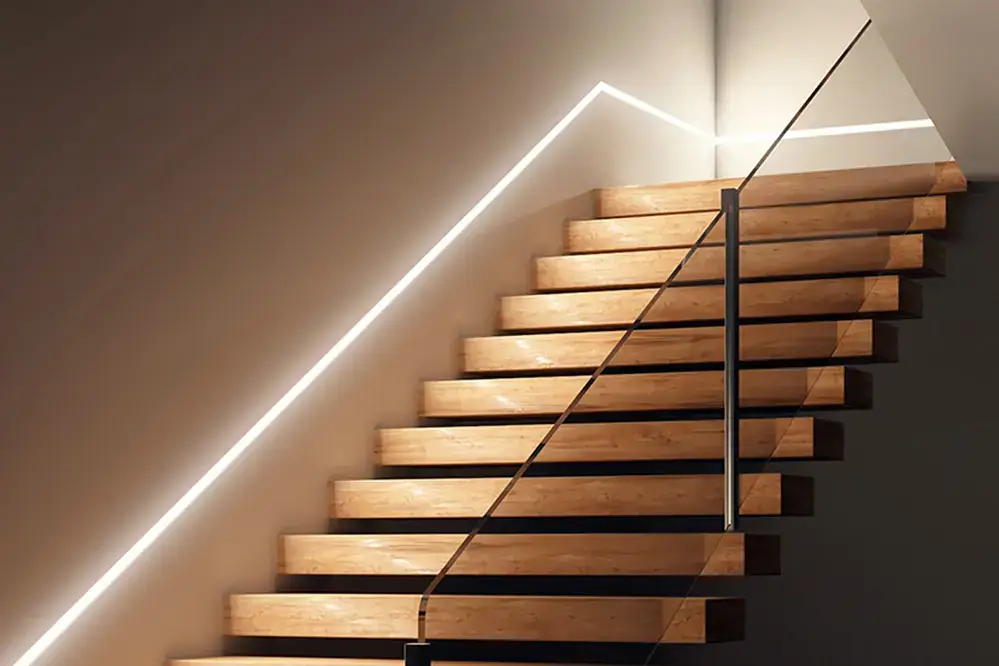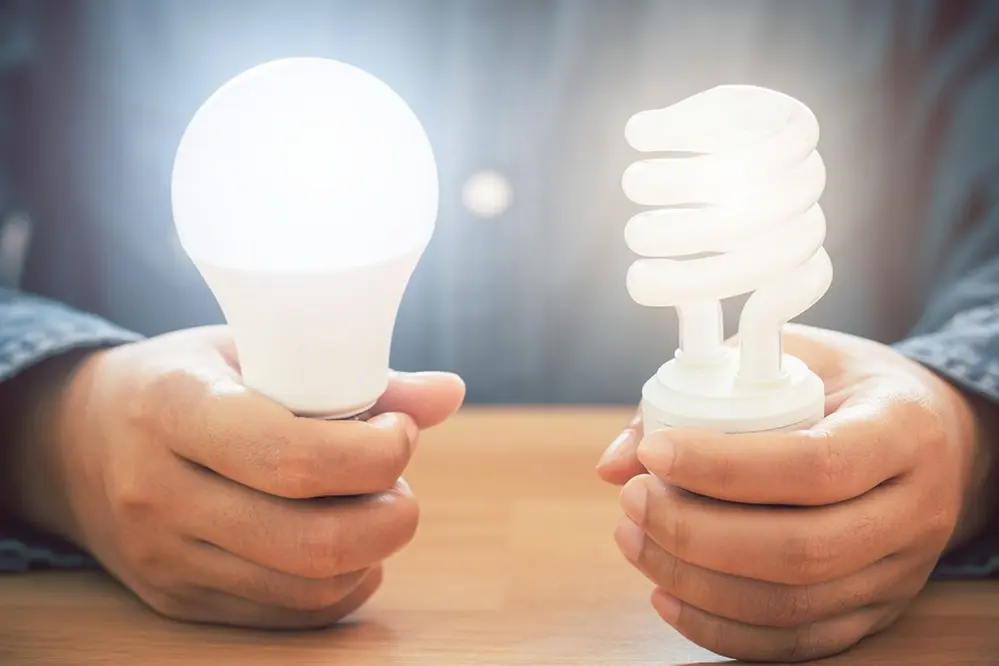LED lighting has revolutionized the way we illuminate our spaces, offering numerous advantages and a few drawbacks to consider. In this blog post, we will delve into the world of LED lighting and explore the pros and cons that every lighting enthusiast and professional should know. Whether you’re looking to upgrade your home lighting or seeking energy-efficient solutions for commercial spaces, understanding the benefits and limitations of LED lighting is crucial.
When it comes to the pros of LED lighting, the list is impressive. LED lights are renowned for their energy efficiency, consuming significantly less power than traditional incandescent bulbs. Not only does this translate into lower electricity bills, but it also contributes to a greener environment by reducing carbon emissions. LED lighting also boasts a longer lifespan, saving you the hassle and cost of frequent bulb replacements. Additionally, LED lights are highly versatile, offering a wide range of colors and brightness options to suit any mood or setting.
However, like any technology, LED lighting does have its cons. One of the main concerns is the initial cost, as LED bulbs tend to be more expensive upfront compared to traditional alternatives. Nevertheless, the long-term savings in energy consumption and replacement costs often outweigh this initial investment. Another aspect to consider is the potential for blue light emissions, which can affect sleep patterns and overall well-being. However, advancements in LED technology have led to the development of bulbs with reduced blue light emissions, addressing this concern.
Now, let me introduce myself. I’m Tom, a seasoned professional in the LED lighting industry with over 15 years of experience. Throughout my career, I’ve witnessed the remarkable evolution of LED technology and its impact on the lighting industry. Drawing from my extensive knowledge and expertise, I’ve meticulously crafted this blog post to provide you with valuable insights into the pros and cons of LED lighting.
So, let’s dive right in and explore the fascinating world of LED lighting together!
Energy Efficiency of LED Lighting

In the realm of energy conservation, LED lighting stands as a paragon of efficiency. These units draw significantly less power than traditional incandescent bulbs, translating into lower energy bills and a more sustainable environmental footprint. By consuming up to 80% less energy while offering the same level of illumination, LEDs serve as a beacon for energy-conscious consumers.
Beyond sheer energy savings, LEDs exhibit a longer lifespan which compounds their efficiency advantage. Typical LED bulbs can last between 15,000 to 50,000 hours, dwarfing the 1,000-hour average of their incandescent counterparts. This longevity reduces the frequency of replacements, thus diminishing the volume of waste generated and the resources required for manufacturing and distribution, further solidifying their role in the pantheon of eco-friendly technologies.
Reduced Power Consumption
LED lights usher in staggering efficiency—by utilizing less energy, they significantly reduce the carbon footprint associated with lighting.
A single LED bulb can save about 80 to 90% of energy compared to a traditional incandescent bulb.
As a result of minimized energy utilization, LEDs lower operational costs, mitigate greenhouse gas emissions, and contribute to national energy independency, paving the way towards a sustainable energy paradigm.
Implementing LED technology broadly across multiple sectors implies a substantial relief on power plants and a corresponding reduction in fossil fuel consumption, which is pivotal in combating climate change.
Longer Lifespan Compared to Incandescents
LED lighting outpaces incandescent bulbs in longevity by a wide margin.
Since their advent, LEDs have transformed expectations of bulb life cycles, lasting up to 25 times longer than traditional incandescent bulbs. This extended lifespan translates to fewer replacements over time, ensuring a reduction in maintenance costs and labor.
LEDs endure because of their solid-state construction, resisting the impacts of shock and vibration better than fragile incandescent filaments. This robustness is especially critical in high-use or hard-to-reach areas, where frequent bulb changes are impractical or costly.
With longevity estimated at around 25,000 to 50,000 hours, depending on the model and usage, LEDs offer an unparalleled operational duration. Moreover, their life expectancy extends beyond mere functionality, as they maintain a high-quality light output throughout their lifespan.
Achieving a prolonged service life, LEDs substantively cut back on resource consumption, reflecting an environmentally conscious choice.
Environmental Impact of LEDs

LEDs signify an eco-conscious evolution in lighting technology, markedly reducing electricity use and, therefore, greenhouse gas emissions. Their efficiency leaps beyond traditional lighting’s capabilities, underscoring an eco-friendly narrative.
In terms of resource conservation, LED lighting demonstrates reduced material use due to infrequent replacements, and their lack of hazardous substances like mercury found in certain fluorescents amplifies their environmental appeal. Collectively, these attributes herald LEDs as champions of sustainability.
Moreover, the ripple effect of widespread LED adoption can result in substantive reductions in energy demand, potentially alleviating strains on power grids and contributing to efforts against climate change.
Decreased Greenhouse Gas Emissions
LEDs offer a significant reduction in emissions.
By leveraging the higher efficiency of LED lighting, energy consumption for illumination drops dramatically. A direct correlation exists between the energy saved from LEDs and a decline in greenhouse gas emissions, as less energy usage translates to fewer emissions from power plants. Consequently, this energy-efficient technology is integral to global efforts aimed at mitigating climate change.
LEDs suppress the carbon footprint of lighting.
This suppression is measurable and impactful – by conserving energy, LEDs indirectly reduce the demand for fossil fuels. Substantial energy savings translate into fewer carbon dioxide (CO2) emissions directly attributed to electricity generation, resulting in a lesser environmental burden.
The contribution of LEDs to decreased emissions is ongoing and evolving. With continued advancements in LED technology and increased market penetration, the positive environmental impact is expected to amplify. The International Energy Agency forecasts that LEDs could lead to a halving of lighting-related emissions by 2030, making a potent statement about the technology’s role in confronting climate change.
Potential Hazardous Material Concerns
Despite the ecological benefits of LED lighting, it is imperative to address the presence of hazardous materials within LEDs, which may pose a risk to both environmental and human health. These concerns are magnified during disposal, as LEDs are not completely free from toxic substances.
Certain LEDs contain small amounts of heavy metals like lead and arsenic. When disposed of improperly, these can leach into the environment.
The manufacturing process of LEDs requires rare earth elements and metals such as gallium, which are mined under conditions that raise environmental and ethical questions. Responsible sourcing and recycling are key to mitigating these impacts as the industry progresses.
The challenges associated with LED disposal underscore the need for robust recycling programs. Without proper waste management protocols, the potential environmental gains offered by LEDs could be compromised. As such, it is critical to establish a circular economy for electronics, ensuring the harmful components are reclaimed and recycled rather than contributing to pollution. This ‘cradle-to-cradle’ approach reinforces the sustainable promise LED technology holds while managing its ecological footprint effectively.
LED lights and climate change
The ascendance of LED lighting is a beacon of progress in our struggle against climate change, offering energy efficiency, a significant reduction in greenhouse gas emissions, and a pathway to a cleaner energy ecosystem.
LEDs help reduce carbon footprints by using less electricity than traditional lighting options.
Moreover, LEDs have a longer lifespan which means less frequent replacements and reduced waste generation.
This durability translates into a lower demand for manufacturing and a corresponding decrease in associated carbon emissions.
While LEDs do consume electricity, their improved efficiency places less strain on power grids, particularly important as we transition to renewable energy sources. This shift has the potential to diminish our reliance on fossil fuels and the consequent carbon emissions that amplify global warming.
Nevertheless, the true potential of LEDs in combating climate change hinges on sustainable disposal practices. Conscious recycling of these fixtures can mitigate their environmental drawbacks and amplify their green benefits.
Economic Considerations for LED Adoption
The upfront cost of LED lighting can deter initial adoption despite the long-term savings offered. Consumers must navigate this dichotomy to unlock LEDs’ economic benefits.
When factoring in the energy savings and extended lifespan of LED products, the total cost of ownership is typically lower than traditional lighting systems. This cost-effectiveness becomes more pronounced with scale, influencing both consumer habits and the broader market.
Accounting for reduced maintenance and replacement costs, LEDs offer a compelling value proposition over time for both residential and commercial use.
Initial Installation Costs
LED lighting technology is known for its efficiency and longevity, which often translates to higher initial purchase prices. This upfront investment can sometimes be a deterrent for those considering a transition to LED lighting solutions.
However, when assessing the overall financial impact, it’s critical to account for the long-term energy savings and reduced maintenance needs associated with LEDs. These factors contribute to a lower total cost of ownership, despite the higher initial expenditure. Moreover, various incentives and rebates offered for energy-efficient upgrades can help offset these installation costs, further easing the financial burden.
Yet, it’s important to recognize that advanced LED lighting systems may require specialized fixtures or additional components, potentially elevating the initial setup cost. Especially in situations that necessitate retrofitting, the cost can be significant when compared to direct replacements using traditional lighting solutions.
Nevertheless, for those committed to sustainable practices, the initial costs can be viewed as an investment in environmental stewardship. The reduced energy consumption of LED lights directly decreases greenhouse gas emissions associated with electricity generation. This aspect, paired with diminishing prices over time, underscores the growing accessibility and environmental advantages of LED technology, particularly in the battle against climate change.
Long-Term Savings and Incentives
LED lighting stands as a beacon of efficiency, promising significant cost savings over its lifespan.
- Reduced Energy Bills: LED lights consume around 75% less energy than traditional incandescent bulbs, translating to substantial cost savings.
- Longevity: LEDs have a lifespan of up to 25 times longer than incandescent lights, minimizing replacement costs and frequency.
- Maintenance Savings: The durable nature of LEDs leads to fewer maintenance needs and associated costs.
- Government Incentives: Tax credits, rebates, and other incentives for energy-efficient lighting further reduce the total investment.
- Utility Rebates: Many utility companies offer rebates for transitioning to energy-efficient LED lighting.
The initial investment in LED technology can be recuperated through these long-term economic benefits.
Inclusive of economic incentives, investing in LED lighting is not merely a cost-saving measure but an environmentally conscious choice.
LED Lighting Performance

LED illumination showcases remarkable efficiency that extends beyond just energy consumption. With a notable increase in lumens per watt, LEDs offer superior brightness with less power compared to their incandescent or fluorescent counterparts. This higher luminous efficacy results in brilliant illumination with fewer fixtures needed, optimizing both spatial design and operational costs. Moreover, their instant-on capability and consistent light output, without flickering or warm-up time, make them highly reliable for a variety of applications. Where color rendering is key, LEDs provide excellent color accuracy that brings out the true vibrancy in a space, ensuring that every environment is seen as intended.
Light Quality and Color Rendering
The quality of light emitted by LEDs is a critical component in various applications, from residential to commercial settings.
- Color Rendering Index (CRI): LEDs with high CRI ratings can show colors more accurately, similar to natural light.
- Color Temperature: LED lights offer a spectrum of color temperatures, from warm (cozy, yellowish light) to cool (bright, bluish light).
- Dimmability: Advanced LED solutions offer smooth dimming capabilities, allowing for flexible light intensity adjustment.
- Consistency: LEDs are engineered to provide consistent color and brightness over time, unlike traditional light sources that may yellow or dim.
- Directionality: LEDs are inherently directional, intensifying their efficiency in applications where focused light is needed.
LED technology has revolutionized the way we perceive color and light in our environments.
The interplay between light quality and color rendering can greatly influence ambiance, mood, and even perceived room temperature.
Directionality and Dimming Capabilities
LED lighting excels in directional output, casting light precisely where needed with minimal waste. Its intrinsic directionality makes it supremely efficient in task and accent lighting roles. Unlike omnidirectional bulbs that emit light 360 degrees around the source, the LED design concentrates light, enhancing its suitability for specific applications. This focused approach contributes to overall energy savings and increased practicality in lighting design.
Moreover, LEDs possess superior dimming capabilities compared to traditional lighting technologies. When paired with compatible dimmer switches, LEDs can adjust their brightness seamlessly across a broad range, accommodating an array of ambiances and reducing energy consumption even further. The capacity for fine-tuned light control allows users to create the desired atmosphere and minimizes unnecessary power usage, a feat less attainable with older lighting standards.
In systems like LED strip lighting, the marriage of directionality with dimming opens up creative possibilities for designers. The flexibility of strip lights to adhere to varied surfaces, coupled with their adjustability, contributes to both functional and artistic installations. Energy efficiency does not preclude aesthetic versatility; instead, LED technology amplifies it, allowing for both precision lighting solutions and an expansive palette for design expression.
Addressing concerns about compatibility, it’s vital to use dimmers explicitly designed for LED usage to avoid performance issues. The market offers an assortment of compatible dimming systems engineered to maintain the integrity and longevity of LEDs. Proper pairing ensures smooth operation devoid of flickering or reduced lifespan, thus preserving the quality of the LED experience.
Finally, it’s worth noting that not all LED products feature dimming functionality. When selecting LED lighting solutions, one must ensure that the product specifications support dimming if this feature is desired. Navigating the variety of LED offerings requires attention to detail, ensuring both the advantages of directionality and dimming are fully accessible.
FAQs
Are LEDs environmentally friendly compared to traditional lighting options?
LEDs reduce carbon footprints through lower energy consumption and longer lifespans, thus decreasing environmental impact.
Do LED lights contribute to climate change?
LED lights offer a solution for reducing greenhouse gas emissions due to their energy-efficient nature.
How do LED strips affect the environment differently from other LED products?
LED strips usually have a lower power density, meaning they consume less energy per unit length compared to other LED fixtures, which contributes to conservation and reduced environmental impact.
Given the upward trajectory in LED adoption, the lighting industry’s shift towards sustainability has been palpable. LEDs intersect the confluence of technological advancement and ecological responsibility, positioning them as frontrunners in the fight against climate change. Their low energy utilization and reduced material usage make them a linchpin in strategic plans for mitigating adverse environmental consequences. Conclusively, while LEDs are not “perfect” in environmental terms, they represent a significant improvement over traditional lighting solutions.
What is LED lighting advantages and disadvantages?
LED lighting has several advantages and disadvantages. One advantage is its energy efficiency, as LEDs consume less power than traditional light bulbs. This can lead to significant energy savings over time. Additionally, LED lights have a longer lifespan compared to other lighting technologies, reducing the need for frequent replacements.
Another advantage of LED lighting is its durability. LEDs are more resistant to shock, vibration, and temperature changes, making them suitable for various environments. They also emit very little heat, which can help reduce cooling costs in certain applications.
LEDs offer flexibility in terms of color options and lighting effects. They can be easily dimmed and are available in a wide range of colors, allowing for creative lighting designs. Furthermore, LED lights do not contain harmful substances like mercury, making them more environmentally friendly.
However, there are also some disadvantages to consider. One drawback of LED lighting is its initial cost. LEDs can be more expensive to purchase initially than traditional light bulbs. However, the long-term energy savings and lifespan of LEDs often outweigh this higher upfront cost.
Another potential disadvantage is the issue of light quality. While LED lighting has improved over the years, some people may still prefer the warm and natural light emitted by incandescent bulbs. However, advancements in LED technology have reduced this gap, and many LEDs now offer high-quality light.
In conclusion, LED lighting offers numerous advantages such as energy efficiency, durability, and flexibility in design. Despite its higher initial cost and potential differences in light quality, LEDs are becoming increasingly popular due to their long lifespan, energy savings, and environmental benefits.
What is the negative of LED lights?
- Higher upfront cost compared to traditional lighting options
- Limited color temperature options for certain applications
- Potential for blue light hazard if not properly filtered or controlled
What is the biggest advantage of LED lights?
The biggest advantage of LED lights is their energy efficiency, long lifespan, high durability, and low maintenance requirements, making them a cost-effective and environmentally-friendly lighting solution for various applications.
How LEDs can help you go green?
significantly less electricity compared to traditional incandescent bulbs. This means that by switching to LED lights, you can reduce your energy consumption and lower your carbon footprint, contributing to a greener environment.
Secondly, LED lights have a longer lifespan compared to traditional bulbs. They can last up to 25 times longer, which means fewer bulbs end up in landfills. This not only reduces waste but also saves resources and reduces the environmental impact of manufacturing and disposing of bulbs.
Furthermore, LED lights do not contain harmful substances like mercury, which is commonly found in other types of lighting, such as compact fluorescent lamps (CFLs). This makes LED lighting a safer and more environmentally friendly option.
Additionally, LED lights are highly controllable and customizable, allowing you to adjust the brightness and color temperature according to your needs. This means you can optimize your lighting settings to minimize energy usage while still maintaining a comfortable and well-lit environment.
Overall, by choosing LED lighting, you can make a positive impact on the environment by reducing energy consumption, minimizing waste, and avoiding the use of harmful substances. Going green with LEDs is not only beneficial for the planet but also for your energy bills in the long run.
Conclusion
LED lighting’s ascendancy is well justified.
This enhanced illumination technology offers myriad benefits, most prominent among which are its energy efficiency and longevity. By adopting LED lights and LED strip lighting, individuals and institutions contribute significantly to environmental conservation, owing to reduced power consumption and lower greenhouse gas emissions. However, when considering the environmental impact, one must scrutinize the entire lifecycle of these products.
The conundrum of environmental impact lies within their disposal.
Despite advantages, LEDs also pose some challenges. The production process of LEDs involves the use of rare earth elements and potentially hazardous substances, and the end-of-life disposal can pose environmental risks if not handled properly. As an evolving technology, measures for recycling and safer material use are constantly improving.
LEDs represent a net-positive change for our ecosystem.
While current methods of manufacturing and disposal present drawbacks, the overall benefits of LED lighting in reducing energy consumption and combatting climate change are incontrovertible. Ensuring that progressive strides are made in manufacturing processes and recycling will enhance their ecological virtues. The LED’s role in sustainable lighting solutions appears set to expand, making it a significant influencer on our collective environmental future.





